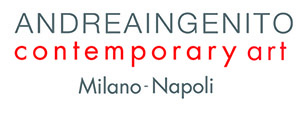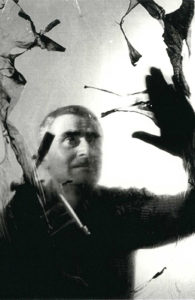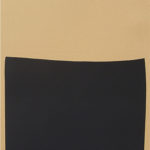Alberto Burri (Città di Castello, 1915 – Nice, 1995) exponent of Informal Art. After graduating from medical school in 1940, he enlisted as a medical officer during World War II. Taken prisoner in Tunisia by the Americans, he was imprisoned in the Hereford concentration camp in Texas, where he began to paint.
Returning to Italy in 1946, he moved to Rome, where in 1947 he held his first solo show at La Margherita gallery and the following year, in the same gallery, exhibited his first abstract works, Bianchi and Catrami.
In 1949 he made SZ1, the first printed Sacco, and at the same time participated in the founding of the Gruppo Origine, a movement aimed at overcoming abstract academicism. After 1957 Burri presents Legni, Combustioni, and Ferri in exhibitions held in several American cities. In the early 1960s the first anthological recapitulations in Paris, Rome, L’Aquila, Livorno, and then in Houston, Minneapolis, Buffalo, Pasadena, which, with the new contribution of Plastics, become true historical retrospectives in Darmstadt, Rotterdam, Turin, and Paris (1967-1972), are reported in close succession. The 1970s recorded a progressive rarefaction of technical and formal means toward monumental solutions, from Cretti (earths and vinavil) to Cellotex (compressed for industrial use), while historical retrospectives followed: Assisi, Rome, Lisbon, Madrid, Los Angeles, San Antonio, Milwaukee, New York, Naples.
In 1964 he won the Marzotto Prize. In parallel, he also devoted himself to theater, for which he created the sets for Spiritualis at La Scala in Milan in 1963, for November Steps at l’Opera in Rome in 1972, and Tristano e Isotta at Regio di Torino in 1975.
In 1973 Burri was awarded the Feltrinelli Prize for Graphics by the Accademia Nazionale dei Lincei “for the quality and invention of a graphic design made with very modern means.” The prize is donated by the artist for the restoration of Luca Signorelli’s fresco cycle in the Oratory of San Crescentino in Morra di Città di Castello. In the 1980s Alberto Burri exhibited his works all over the world, from New York, to Paris, to Nice and Rome.
In Italy, his works are exhibited mainly in two museums in Città di Castello: at Palazzo Albizzini, inaugurated in 1981, and at the Ex Seccatoi del Tabacco, which houses the artist’s great pictorial cycles, inaugurated in 1990.
In December 1994, the Burri donation to the Uffizi was celebrated, which included three series of graphic works in addition to the painting Black and White. Also in 1994 Burri participated in the exhibition The Italian Metamorphosis 1943-1968 at the Solomon R. Guggenheim Museum in New York. From May 11 to June 31 ’94 at the National Art Gallery in Athens the cycle Burri the Polyptych of Athens, Architectures with Cactus is presented, which will be exhibited later at the Italian Cultural Institute in Madrid (1995). His works are exhibited in some of the world’s most important museums: the Georges Pompidou Center in Paris, the Solomon R. Guggenheim Museum in New York, the Tate Gallery in London, the National Gallery of Modern and Contemporary Art in Rome, Il Castello di Rivoli (TO),the Museum of Modern and Contemporary Art in Trento and Rovereto.
Burri died in Nice in 1995, a month before his 80th birthday.
- Alberto_Burri-Museo_di_Capodimonte-Serigrafia_su_cartone_pressato_(cellotex)-89.5x64_cm-1978




